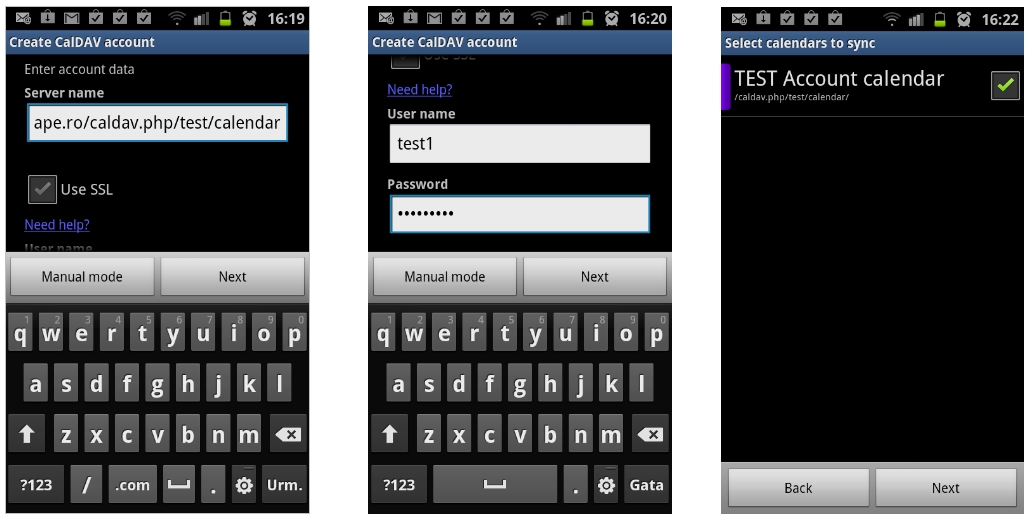
- Webdav server mac how to#
- Webdav server mac mac os#
- Webdav server mac pdf#
- Webdav server mac install#
- Webdav server mac password#
IT Hit WebDAV Server Engine can publish data from database, file system, SQL database, your DMS/CMS/CRM or virtually any other storage.
Webdav server mac pdf#
This works for Microsoft Office documents, LibreOffice documents, Adobe Acrobat PDF file, AutoCAD files and any other documents. NET you can enable opening documents for editing from a web page and save back to server without download and upload steps. NET project or DAV-enable your CMS/DMS/CRM. NET you can create your own WebDAV server, CalDAV/CardDAV server, add WebDAV support to your existing.

We recommend running a reverse proxy (eg, Traefik) to handle that, which we cover in our more in-depth guide on WebDAV.With IT Hit WebDAV Server Engine for. However, you might want to have a proper SSL certificate.
Webdav server mac how to#
The instructions above covered how to run WebDAV over HTTPS with a self-signed certificate, which is sometimes enough. Stop your container ( docker stop webdav) and run it again with -v /root/user.passwd:/user.passwd Secure WebDAV with SSL and Let’s Encrypt It will prompt you to enter some passwords. Run the commands below to create an authentication file on your server and add some logins.
Webdav server mac password#
(This will overwrite any USERNAME and PASSWORD you specify.) If you want to have several different logins for different people, you can bind mount your own authentication file to /user.passwd and the container will use that instead. To do that, stop your container ( docker stop webdav) and run it again with this option: -e ANONYMOUS_METHODS=GET,POST,OPTIONS,PROPFIND Multiple login users You might want to give read-only access to people without a login. Anonymous accessīy default, access to your files is forbidden without a login. We’ll cover some common examples below, but you can also visit for more information.
Webdav server mac mac os#
(NB: The -e LOCATION=/webdav option we used above means WebDAV is available at the URL path but you can change that to anything else you want.) Mac OS Finder You can now connect to your WebDAV server to start uploading files! If you want to have a proper Let’s Encrypt certificate, see our more in-depth guide on WebDAV. publish 443:443 -e SSL_CERT=selfsigned -name webdav \ e AUTH_TYPE=Basic -e USERNAME=alice -e PASSWORD=secret1234 \ Run these commands to run WebDAV on HTTP:ĭocker run -restart always -v /srv/dav:/var/lib/dav \ You’ve got two choices here of what command to run, depending on whether you want HTTP or HTTPS. One way to do that is to create a directory on the server called /srv/dav and bind mount that into the container. We don’t want our WebDAV documents to get lost if Docker restarts, so we need some persistent storage. We maintain an easily configurable bytemark/webdav image, which runs Apache as a WebDAV server. Now you should have docker-ce installed, and security upgrades will be applied automatically overnight.
Webdav server mac install#
Login to your Debian 9 server and run these commands as root user:Īpt-get install -y apt-transport-https ca-certificates curl gnupg2 software-properties-commonĪdd-apt-repository "deb `lsb_release -cs` stable"ĭEBIAN_FRONTEND=noninteractive apt-get install -y unattended-upgrades You’ll know installation has finished when you see a login prompt.

Click on the Console button next to your Cloud Server.The Panel will tell you the root password for your server.Your Cloud Server will be ready in a couple of minutes.Backup Schedule: Leave enabled (recommended).Name: Give your server a name (eg, “webdav”).Add a Cloud Server with these settings:.To create a cloud server, follow the instructions below. Things you’ll needĪ server - if you’ve already got one skip down to Install Docker section. Sounds like FTP doesn’t it! WebDAV is similar but works over HTTP/HTTPS and has a few advantages: more flexible authentication and security, and better performance in many situations. WebDAV is a neat technology that lets you manage and share files on a remote server. 5 minutes is all it takes to get up and running.


 0 kommentar(er)
0 kommentar(er)
